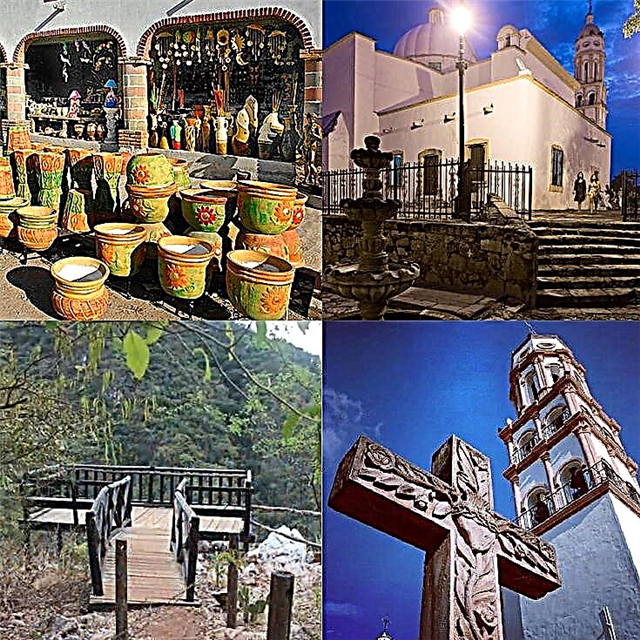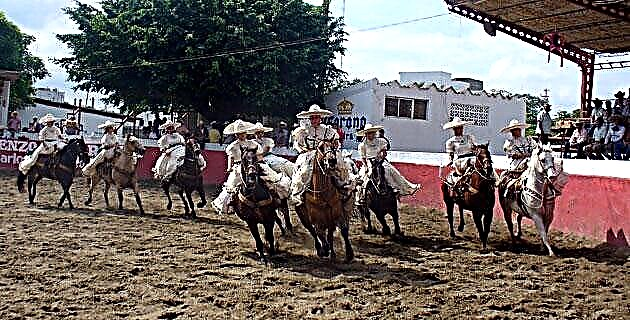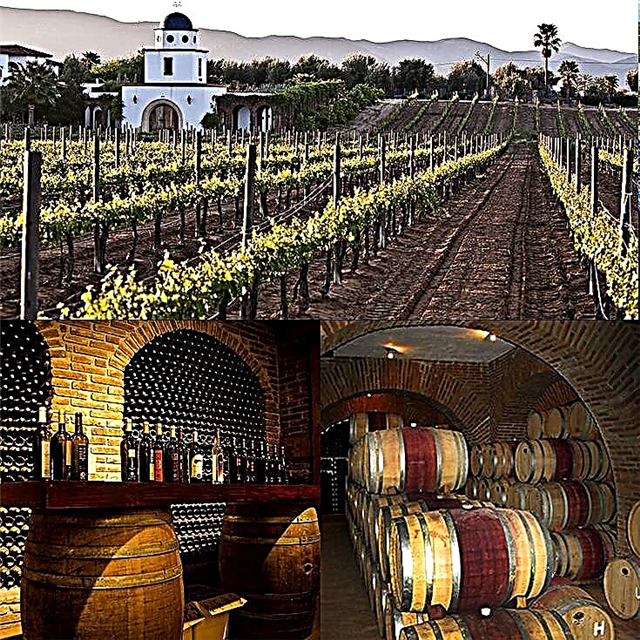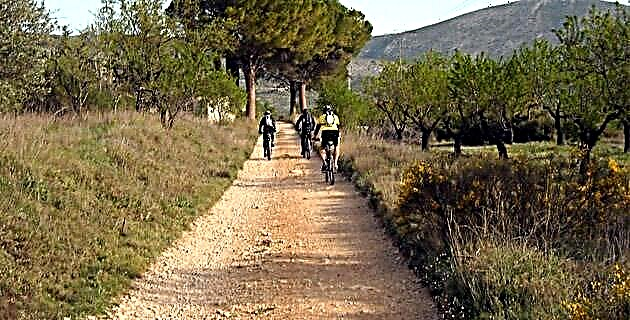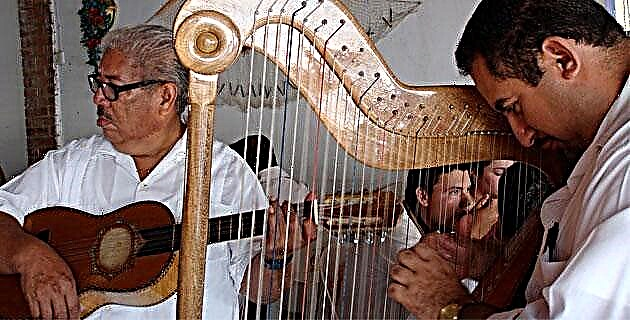
Veracruz, in addition to being the port of nostalgic encounters and the capital of a naturally exuberant state, has always prided itself on being the musical capital of Mexico. It has been everything from the refuge of numerous Cuban musicians -among them Celia Cruz, Beny Moré and Pérez Prado-, to the favorite stopover of Russian sailors and the obligatory place for every Mexican who yearns to return home exhausted.
It is impressive that good traditional music has survived here; Long years of competition with the great dance orchestras, street marimbas and mariachis, have not succeeded in marginalizing the son jarocho groups. Sounds like La Bamba that originated in the 18th century persist, whose energy never ceases to impact rockers as well as contemporary Hollywood directors.
The forties and fifties are considered the golden age of son jarocho, a time when the best musicians came to Mexico, from the most remote part of the state of Veracruz, to become stars of celluloid and vinyl, in radio announcers and magnets of the most prestigious stages in Latin America. Despite the accelerated development of Mexico City and the new lifestyles, the taste for music so recurrent in the dances and festivals of the town was not extinguished.
With the arrival of a new forgetful generation, the boom of son jarocho came to an end. Many artists like Nicolás Sosa and Pino Silva returned to Veracruz; others remained in Mexico City, to die without fame or fortune, as was the case with the great requintista Lino Chávez. The great success of the son jarocho corresponds to a very small part of its history. The peak of success only housed a few, mainly Chávez, Sosa, the harpists Andrés Huesca and Carlos Baradas and the Rosas brothers; In the 1950s, the streets of Mexico were the scene of a large number of jarochos soneros to whom no other door was opened than the cantina.
Today, although it is difficult for some talented musician from Son Jarocho to become a star, it is also true that there is no lack of work in bars and restaurants in the port and on the coast, or to liven up the parties throughout the region.
Towards the south of Veracruz, where the indigenous culture dilutes the strong African presence of the port and other regions of the state, jarocho sones are still played in the fandangos, the popular jarocha festival, where couples alternate on the wooden platform, adding with his complex stamping a new layer to the dense rhythms produced by the guitars.
MUSICIANS WITH HISTORY
At the end of the last century, the son jarocho had no rival and the fandangueros used to be celebrated throughout the state. Later, when the fashion for ballroom dancing burst into the port with danzones and guarachas from Cuba and polkas and northern waltzes, the soneros adapted their harps and guitars to the new repertoire, and added other instruments such as the violin. Pino Silva recalls that, in the 1940s, when he began to play in the port, the sounds were not heard until dawn, when people, now yes, opened their souls.
Something similar happened to Nicolás Sosa. Peasant and self-taught harpist, he rehearsed on the doorstep of his house so as not to disturb people surrounded by mosquitoes, and soon he was making a living playing waltzes and danzones. One day, when it occurred to him to play some “pilón” sounds at the Alvarado fair, a man from the capital invited him to Mexico City, proposing that he make the trip in March of the following year. The remoteness of the invitation date motivated Nicolás's distrust. However, shortly after, they informed him that that man had left him the money for his trip to Mexico. "It was on May 10, 1937 and that day I caught the train from here, without knowing what it was going to," recalls Sosa, almost 60 years later.
It turned out that his patron was Baqueiro Foster, a prominent composer, producer, and music scholar, as well as an excellent host: Sosa stayed for three months at his home located behind the National Palace. Baqueiro transcribed the music that the Veracruz native had absorbed since his childhood and that he thought no one was interested in. Later he used those transcriptions in his work with the Jalapa Symphony Orchestra and promoted Sosa and his group to perform, several times, in the elite environment of the Palacio de Bellas Artes.
Ignoring Baqueiro's recommendations, Sosa returned to the capital in 1940, where he remained for thirty years. At that time he participated in film and radio, as well as playing in different nightclubs. His great rival was Andrés Huesca, who ended up achieving greater renown and wealth than Sosa due to his sophisticated style of interpreting the original son to which Don Nicolás always remained faithful.
Like most soneros, Huesca was born into a peasant family. his intuition to promote the son jarocho led him to introduce important modifications: a larger harp to play standing up and modern compositions with fewer spaces for vocal improvisation or instrumental soloists that, while retaining the jarocho flavor, were more “catchy”.
In general, the musicians who invaded the capital, in the decades of the Jarocho boom, gradually adapted to a faster and more virtuosic style that was more satisfying to the public in urban centers. On the other hand, this greater speed also suited the musician, especially in the canteens, where the client hit by piece. Thus, a son that lasted up to fifteen minutes in Veracruz could be dispatched in three, when it came to setting the scene in a canteen in Mexico City.
Today, most of the Jarocho musicians interpret this modern style except for Graciana Silva, one of the most famous artists today. Graciana is an excellent harpist and singer from Jarocha and interprets the sones following the old ways with a style even older than Huesca. Perhaps this is explained because, unlike most of her colleagues and countrymen, Graciana never left Veracruz. Its execution is slower, as well as deeply felt, with more complex and addictive structures than the modern versions. La Negra Graciana, as she is known there, plays as she learned from the old teacher who crossed the river to initiate her brother Pino on the harp. Despite being, as Graciana says, "blind in both eyes," the old Don Rodrigo realized that it was the girl, who was watching him carefully from a corner of the room, who was going to become a great harpist of the popular music.
Graciana's voice and her way of playing, "old-fashioned", caught the attention of musicologist and producer Eduardo Llerenas, who heard her play in a bar on the portals of Veracruz. They met to make an extensive recording with Graciana, playing alone, and also accompanied by her brother Pino Silva on the jarana and with her ex-sister-in-law María Elena Hurtado on a second harp. The resulting compact, produced by Llerenas, caught the attention of several European producers, who soon hired her for a first artistic tour of Holland, Belgium and England.
Graciana is not the only artist who prefers to play alone. Daniel Cabrera also lived his last years loading his requinto and singing the old sounds throughout Boca del Río. Llerenas recorded 21 of these musical jewels for him, drenched in an unusual melancholy within the joy of Jarocha. Cabrera died in 1993, shortly before reaching the age of one hundred. Unfortunately, there are few artists left with such a repertoire. The commercialization of the son jarocho forces the musicians of the cantina to include boleros, rancheras, cumbias and the occasional commercial success of the moment in their repertoire.
Although the Jarocho repertoire has been reduced, the cantinas are still an important impulse for traditional music. As long as customers prefer a good live sound to what the jukebox or video offers, many musicians will still be able to earn a living. Furthermore, in the opinion of René Rosas, a musician from Jarocho, the canteen turns out to be a creative environment. According to him, his years of work in these places were the most stimulating, because, to survive, his ensemble had to handle a huge repertoire. During that time, the Tlalixcoyan group, as the one of René Rosas and his brothers was named, produced their first album, after several weeks of rehearsal in the back room of the Temple of Diana, a cantina in Ciudad Nezahualcóyotl.
The Tlalixcoyan complex was hired, in a short time, by the owners of an elegant restaurant. There they were discovered by Amalia Hernández, conductor of the National Folkloric Ballet of Mexico, who, with professional artistic intuition, joined the Rosas brothers as a whole in her Ballet. From this moment, for the Rosas brothers, the Ballet represented an attractive and safe salary and the opportunity to travel around the world (in the company of 104 colleagues), in exchange for sinking into a kind of musical coma due to the repetitive performance of a minimal repertoire, night after night and year after year.
The glory of son jarocho lies in the spontaneous creativity of each performance. Despite the fact that at present the most frequent jarocho songbook consists of only about thirty sounds, when any of them is interpreted it always results in great and original flourishes on the harp, in improvised responses in the requinto and in instantly invented verses. usually with a strong humorous streak.
After thirteen years, René Rosas left the Folkloric Ballet to play in several important ensembles. Currently René, with his brother the singer Rafael Rosas, the notable harpist Gregoriano Zamudio and Cresencio “Chencho” Cruz, the ace of the requinto, plays for an audience of tourists in Cancun hotels. Their sophisticated style and perfect harmonies on the guitar show the great departure they now keep from their original roots. However, the improvisations on the harp and the furiously interwoven responses of the requinto, reveal his indelible jarocha sonera blood. Rafael Rosas, after 30 years with the Ballet, has not lost his hoarse and horny voice or the old repertoire of his young years.
In the mid-seventies, René left the Ballet to play with Lino Chávez who, if he was not the best known of the Jarocho requintistas, he was probably the best.
Chávez was born in Tierra Blanca and moved to the capital in the early forties. There, following in the footsteps of Huesca and Sosa, he worked in film, radio and recording programs. He was part of three of the most important jarochos groups: Los Costeños, Tierra Blanca and Conjunto Medellín.
Lino Chávez died relatively poor in 1994, but represents a great inspiration for a generation of Veracruz soneros, those who listened to his programs, when they were young. Among these soneros, the Cosamaloapan Ensemble stands out, currently the star of the sugar mill dances of that sugarcane town. Directed by Juan Vergara, he plays an impressive version of Son La Iguana, in which the rhythm and voice clearly reveal the African roots of this music.
THE SON JAROCHO LIVES
Although today's good soneros, such as Juan Vergara and Graciana Silva are already over 60 years old, this does not mean that the son Jarocho is in decline. There are a good number of young musicians who prefer son to cumbia, merengue to marimba. Almost all of them come from the ranches or fishing villages of Veracruz. A notable exception is Gilberto Gutiérrez, co-founder of the Mono Blanco group. Gilberto was born in Tres Zapotes, a town that has produced excellent peasant musicians, although he and his family are local landowners. Gilberto's grandfather was the owner of the first gramophone in town and thus brought the polkas and waltzes to Tres Zapotes, leaving the grandchildren the implicit task of recovering the place they deserve for him.
Of all the current Veracruz groups, Mono Blanco is one of the most musically daring, introducing a few different instruments to the son jarocho and working in the United States with Cuban and Senegalese musicians to produce a distinctive sound. However, so far, the greatest professional success has been achieved with the most traditional interpretations of the old jarocho sones, which says a lot about the current public's taste for this music.
Gutiérrez was not the first to give son Jarocho an international flavor. Following the boom of the 1940s and 1950s, many Mexican musicians traveled to the United States and one of the oldest jarocho sones managed to invade the homes of millions of Americans: La Bamba, with versions by Trini López and Richie Valens.
Fortunately, La Bamba can be heard in an original form, in the voice of Negra Graciana and also in the version of some groups from the south of the state. Such performances show the spirit of a music that, like the agile and esteemed iguana, can face many setbacks, but resolutely refuses to die.


